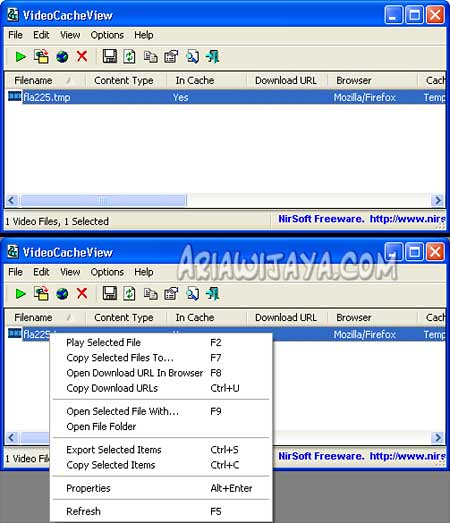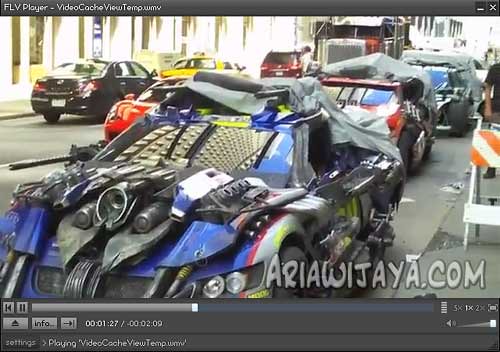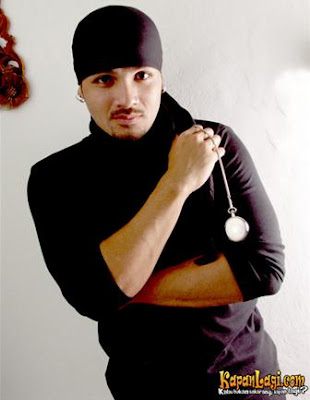

The
Melbourne shuffle is a
rave and
club dance that originated in the late 1980s in the underground rave music scene in
Melbourne,
Australia. The basic movements in the dance are a fast heel-and-toe action with a style suitable for various types of
electronic music. Some variants incorporate arm movements.
Time Line
Late 1980s–early 1990s
In the late '80s, the Melbourne Shuffle began to emerge as a distinct dance, incorporating more hand movement than it's predecessor, Stomping. Hip hop, disco and rock music was gradually replaced with trance, breakbeat hardcore, drum and bass and house music. Shuffling originally incorporated tap and traditional ballet -style foot shuffling. Shuffling originated from 'Stomping', which in turn originated from previous historical Celtic vernacular dance styles. The Irish Jig can easily be matched to some earlier variations of the Melbourne Shuffle. When b-boys started attending Shuffling dance events, they brought in their own set of hip hop dance moves, for example, the running man. Ever since such hip hop influences, the Melbourne Shuffle has featured a more 'underground vibe' than oldskool Shuffling (some may even say it has an 'urban' feel).
Mid–late 1990s
A number of videos documenting the style during this era exist as the style increased in popularity.There are many variations of this dance but the main heel-to-toe movement remained the key motion, giving it the name "the Melbourne shuffle".
2000–2008
In 2004 a documentary entitled Melbourne Shuffler began filming in Melbourne clubs, raves[citation needed], festivals and outdoor events, before being released on DVD in 2005. In 2006 with the rising popularity of YouTube, dancers internationally now contribute to the Shuffle online, posting their own variations and learning from others. The German band Scooter featured the shuffle performed by veterans Pae & Sarah in the video for the single J'adore Hardcore.The Melbourne shuffle has changed as it has evolved over time, as more people have practiced the dance, the dance itself has changed from the majority of hand movements over feet movements, to present day, where it is mostly based on keeping in time with bass beats.
Mid 2009–Present
In early to mid 2009 the infectious popularity of the Melbourne shuffle on YouTube began to calm but not die, bringing upon a new age of shufflers. The dance began to revert back to what some people call "Oldschool". This reversion of shuffling consisted mostly of wide variations of the "T-Step", minimal running man, and is accented by glides and spins. Although this may be referred to as "Oldschool" this new age of style is still very different from the way rockers in the '90s danced.
Dancing
The name "Melbourne shuffle" was coined by Sonic Animation's Rupert Keiller. The Age referred to it as looking like "a cross between the chicken dance and a foot stomping robot" to the untrained eye,but locals simply called it "stomping" or "shuffling".
Some dancers sprinkle talcum powder or apply liquid to the floor beneath their feet to help them glide more easily, some including 360 degree spins or jumps into their moves.Others apply smooth plastic tape to the soles of their shoes.
Originally consisting of the "T-Step" combined with arm movements, during recent years the "Running Man" has also been adopted into many common styles, accentuating the new focus of keeping time with the beat. The "Running man" involves a stomp forward followed by a single or double hop backwards with the same foot, the other foot repeats the action leading to a running-on-the-spot motion. The "T-Step" is a fast sideways heel-toe motion on one foot twisting at the ankle. The dance is embellished by spins, arm pumps, slides, and kicks.
Hardstyle is performed to music that features a fast 4/4 beat (also known as a 'four-on-the-floor' beat), and is normally accompanied by a heavy, booming bass. For this reason, many people in the US and Europe incorrectly refer to the "shuffle" as just "hardstyle" despite the term "hardstyle" being an umbrella term for many different rave dances globally and as a genre of electronic music. Hardstyle is now most popular danced to the genre under its same name. Hardstyle is a rave dance, whilst most other styles were typically performed in clubs. Hardstyle is also vernacular dance
Media
The Melbourne shuffle dance style has remained relatively underground since its birth in the late 80s and early 90s. The term "Melbourne shuffle" was recorded in the media when Sonic Animation's Rupert Keiller was interviewed by rage, an all night Australian music TV show. The interviewer asked Rupert what his unique style of dance was and the reply was "the Melbourne Shuffle". In December 2002 The Age, an Australian newspaper, made mention of the term in a front page article,attempting to illustrate what the popular Melbourne Shuffle was for the first time to the mainstream public.
Originally Malaysian students studying in Melbourne learned the Melbourne Shuffle at local clubs and parties. They then showed people how to do it when they returned home.
Shufflers have taken their art form and self-expressive dance style overseas and are a regular sight to be seen at rave parties in the UK, Germany, Malaysia and also Thailand, where shufflers can be seen shuffling on the beaches of Koh Phangan during the Full Moon Beach Party. The internet has also been a factor in spreading knowledge and interest in the shuffle.
A documentary on the topic entitled Melbourne Shuffler was in production during 2004–2005 and was recently released in late 2005 on DVD. Another huge contributor to the fame and popularity of the Melbourne Shuffle is YouTube. Every shuffler and shuffle crew found themselves able to support the Melbourne Shuffle and show off their own style and moves, these videos captured everyone's attention.
On 6 September 2008, Network 10 had started filming footage at the Hard Style Dance (HSD) Nightclub for an upcoming Documentary on the Melbourne Shuffle, although no other news has surfaced after the filming of the footage.
In November 2008, "So You Think You Can Shuffle", an Australian YouTube-based video voting competition website was launched, where Shufflers from around the country can showcase their dance skills, comment, and vote on other videos. Starting in 2009 "So You Think You Can Shuffle" also started hosting official shuffle meetups and competitions around Australia and Germany.
In December 2008, The Daily Mercury, a Queensland publication, reported on a story about the Melbourne Shuffle's presence in Mackay. It cited the city's high youtube exposure when compared to other major cities in Queensland. In 2009, MSO, a Melbourne-based company that produces robotics, rave clothing, music and art began production on a documentary titled "GLOBAL SHUFFLE 1990:2010". Scheduled for release in January 2011, the film contains rare footage from Melbourne's underground dance scene in the 90's and documents the invention and evolution of the Melbourne Shuffle. It will feature involvement from the likes of Dr3kar, Shifter Hardstyle Prodigy, Euphemism, Matthew Moyle, Television Unlimited and Global Village.
 New Moon star Ashley Greene gave us more dish on her personal style at the DPA Golden Globes gift lounge, where she picked up goodies like Kerstin Florian luxe skin care and an adorable Cloud B pillow.
New Moon star Ashley Greene gave us more dish on her personal style at the DPA Golden Globes gift lounge, where she picked up goodies like Kerstin Florian luxe skin care and an adorable Cloud B pillow.





























